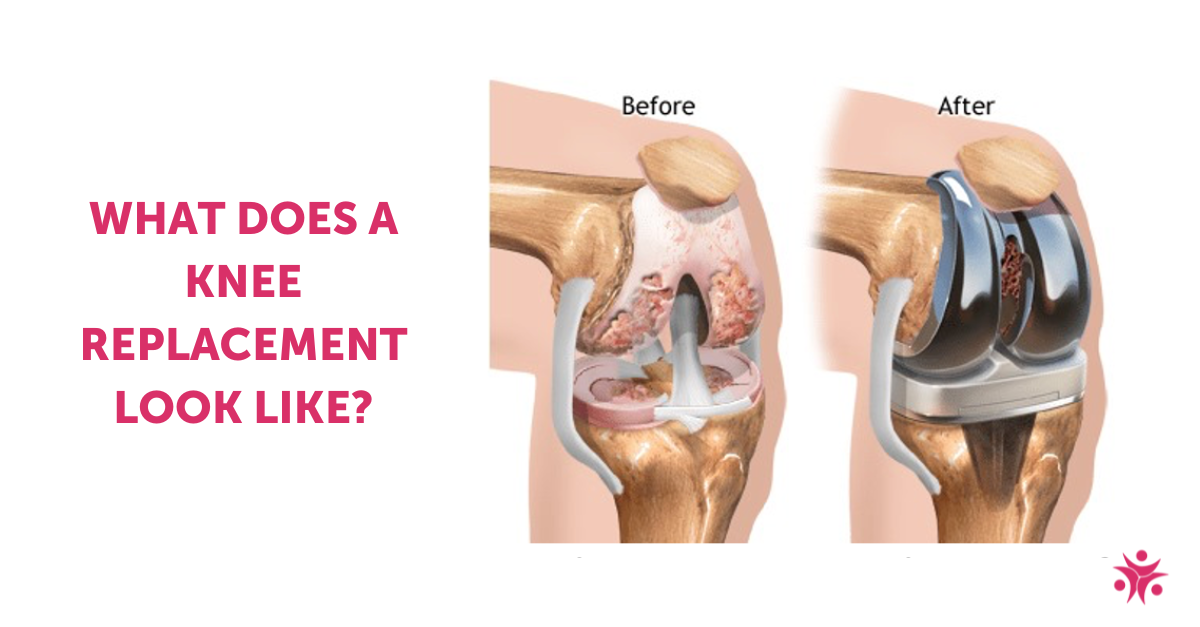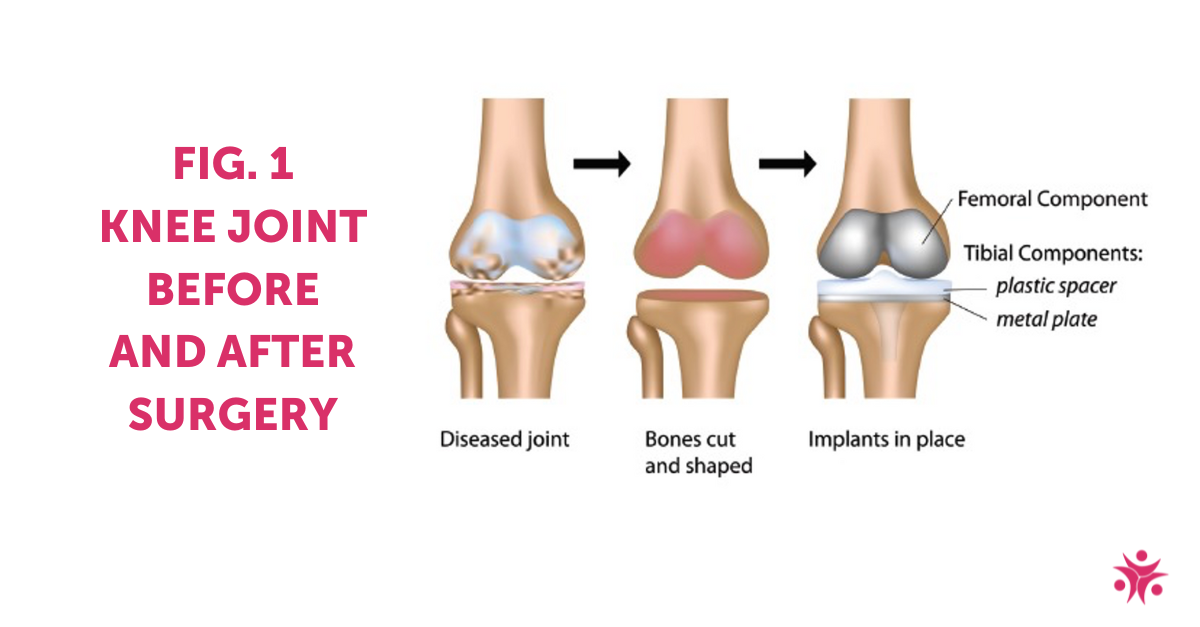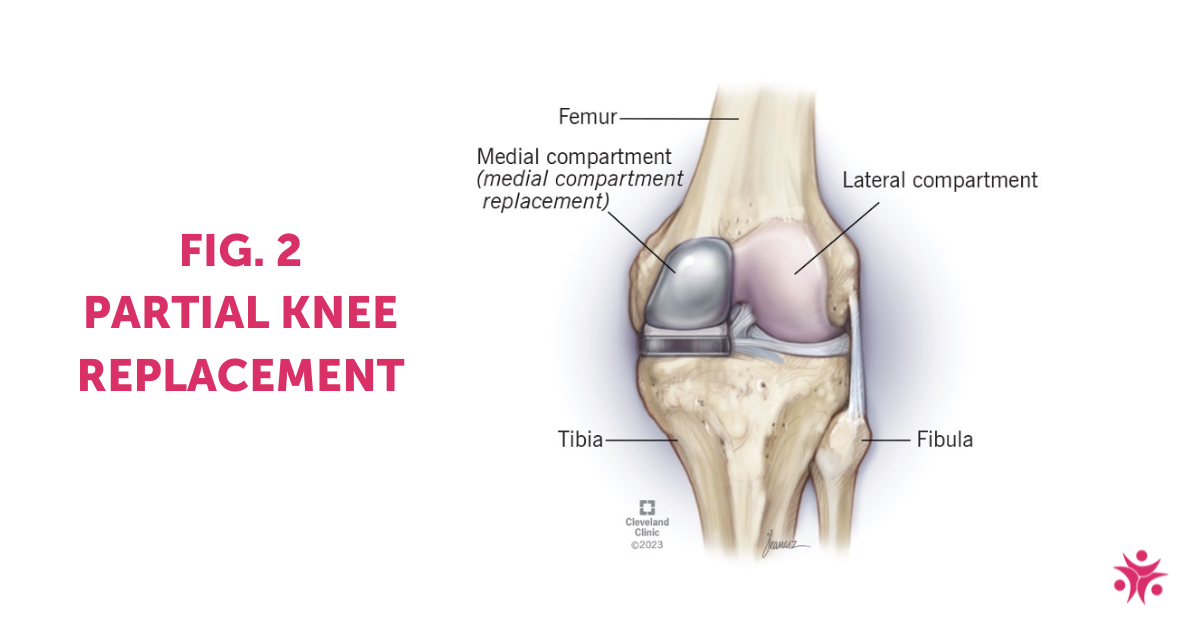What to Expect After Knee Replacement Surgery? All Questions Answered
Thursday, August 29, 2024
Knee replacement surgery, whether total or partial, involves a long recovery and rehabilitation process.
As physiotherapists, we see many clients who've gone through knee replacement surgery and as tough as the recovery can be, it's amazing to see them get back on their feet with less pain and more mobility.
If you're planning to get knee replacement surgery, it makes sense that you might feel a little anxious about all the unknowns. Here, we're going over some of what you can expect leading up to your surgery and how the rehabilitation process usually looks.
As always, please talk to your doctor or surgeon about the specifics of your circumstances as these are generalisations meant to help you ask the right questions.

Knee replacement surgery replaces parts of injured or worn-out knee joints. The surgery can help ease pain and make the knee work better. During the surgery, damaged bone and cartilage are replaced with parts made of metal and plastic. The most common reason for knee replacement surgery is to ease pain caused by arthritis. People who need knee replacement surgery usually have problems walking, climbing stairs and getting up out of chairs.
What to expect before the knee replacement surgery?
If only one part of the knee is damaged, surgeons often can replace just that part. If the entire joint needs to be replaced, the ends of the thighbone and shinbone are reshaped and the entire joint resurfaced. These bones are hard tubes that contain a soft centre. The ends of the artificial parts are inserted into the softer central part of the bones.
“The goal of knee replacement surgery is to resurface the parts of the knee joint that have been damaged and to relieve knee pain that cannot be controlled by other treatments.” - Hopkins Medicine
Knee replacement surgery requires some form of anaesthesia where you'll either be unconscious or awake but unable to feel the procedure. Your doctor will inform you of your options to make the best decision for your particular circumstances.

How long does the pain last after knee replacement surgery?
General pain in the knee after replacement surgery is part of the recovery process. The pain may be associated with swelling and generally goes down in the initial 2-3 weeks. The pain is typically managed with medications such as non-steroidal anti-inflammatory medications or short-term opioid medications. The swelling is generally managed using an ice pack. You’ll need lots of painkillers and it will take time to get over. Generally, this pain starts to subside by around 4 to 8 weeks after surgery.
According to the American Academy of Orthopaedic Surgeons, many people experience moderate to severe swelling in the first few days or weeks after surgery and mild to moderate swelling for 3 to 6 months after surgery.
You can reduce swelling by doing the postoperative exercises provided by your physiotherapist. Elevating your leg on a pillow in bed for several hours each afternoon and using compression stockings will also help.
However, you'll have options when it comes to pain management post knee replacement surgery. In hospital, you'll likely be on strong medication. But once you're home, you'll be prescribed pain relief and anti-inflammatory like ibuprofen or paracetamol which still helps with the pain but with less intensity.
Throughout every stage of the recovery process, physiotherapy is necessary. Working with a physiotherapist not only helps with pain relief, but also helps you strengthen the muscles in your knee, improve your range of motion, resume independent living sooner and avoid potential complications.
To improve your chances of recovering quicker without complications, be sure to rest as much as possible, eat well and stay hydrated. Follow your physiotherapists' guidelines and the health advice from your doctor and you'll be well on your way to recovery.
The recovery can have its ups and downs. You should be able to return to doing everyday activities 3 to 6 weeks after knee replacement surgery. However, you should plan to take somewhere between 4 and 16 weeks off from work, depending on the type of work you do.
What to expect after knee replacement surgery?
What to expect in the first few days after a knee replacement?
- After surgery, you will probably stay in the hospital for one to five days.
It's perfectly normal to experience pain, swelling and bruising in the first few days after your knee surgery but it's still important to do your best to move your knee as much as possible as soon as possible. But you shouldn't be putting any weight on your leg at this point. - When you’re ready, your healthcare team will help you get up and moving. You’ll learn how to use assistive devices including a walker, crutches, or a cane, and navigate stairs.
What to expect in the first week after knee replacement surgery?
- Your physiotherapy exercises at home will focus on restoring gait, range of motion, and strength.
- Follow your Physiotherapists instructions and do your exercises every day. If you notice excessive pain or swelling, check with your healthcare team.
What to expect 3 weeks after knee replacement surgery?
- Walk and stand for more than 10 minutes. You may be using a cane or no assistive device at all.
- Continue doing exercises to improve your mobility and range of motion.
What to expect 5 weeks after knee replacement surgery?
- Start returning to daily activities like work, driving, travel, and household tasks.
- Your Physiotherapist may recommend longer walks. Keep doing your exercises to improve your mobility and range of motion.
What to expect 8 weeks after knee replacement surgery?
- Start returning to low impact physical activities like swimming and cycling.
- Continue rehab for strength, range of motion, and endurance training. Many people see rapid improvements during this period.
What to expect 12 weeks after knee replacement surgery?
- Start returning to higher-impact activities if your surgeon agrees.
- Follow the guidance of your Physiotherapist and surgeon about any ongoing treatments.
What are the discharge criteria after knee replacement surgery?
- Get in and out of bed and walk a short distance with the help of a walker or crutches
- Walk up and downstairs with a walking aid
- Bend the affected knee 90 degrees
- Understand the precautions to avoid potential injuries
You might have to stay in hospital longer if:
- You have had two knees replaced at the same time
- Uncontrolled pain
- General weakness
- Other pre-existing medical conditions
How long is bed rest after knee replacement?
While you may experience pain and swelling following surgery, there is no bed rest period. Instead, you may begin moving around with an assistive device, such as a walker, and performing physiotherapy exercises to improve your mobility and range of motion.
What to avoid after a knee replacement?
After total knee replacement surgery, you may need to avoid getting your bandages wet or submerging the healing area in water.
Later in your recovery, doctors typically recommend avoiding:
- Activities with high risk of falling
- Prolonged sitting
- Too much weight-bearing shortly after surgery
- Running and jumping
- Sports with high impact or quickly changing directions, e.g. soccer, football, rugby, skiing, basketball, hockey, gymnastics
- Kneeling
How painful is rehab after knee replacement?
Rehabilitation after a knee replacement helps to restore mobility, range of motion, and strength as you recover, though you may experience some pain and discomfort from swelling. You typically receive prescription medication to help manage your pain.
If your exercises cause you severe pain at any point, stop doing them and talk with a doctor or physiotherapist.
What is the fastest way to recover from a knee replacement?
Performing your physiotherapy exercises and following your doctor’s instructions may help speed your recovery from a total knee replacement.
How to shower after knee surgery?
Your healthcare team will let you know how long you must wait before showering. If the surgeon used waterproof dressings, you may be able to shower the day after surgery or after several days. If they used dressings that are not waterproof, you will usually have to wait longer before showering.
Avoid soaking your knee for 3–4 weeks to let the incision heal fully, according to the American Association of Hip and Knee Surgeons (AAHKS)
How long does a knee replacement last?
There’s a 90–95% chance that a knee replacement will last 10 years and an 80–85% chance it will last 20 years.
How much should I walk after a knee replacement?
- Discharge to three weeks after surgery: Your doctor will encourage you to walk often with your crutches, walker or other assistive device.
- Four to six weeks after surgery: Within four to six weeks of your surgery, you will likely be able to walk 10 minutes or more at a time without a walker, cane, crutches or other assistive device.
- Eight to 12 weeks after surgery: last for eight to 12 weeks. At this point, you should be able to walk several blocks at a time and may even be able to pick up hobbies like swimming and cycling. After eight weeks, your doctor may permit you to perform modified activities that involve minimal knee twisting, like golf, dancing or yoga. After your therapy program ends around the 12-week mark, stick with your walking schedule and gradually challenge yourself to walk increased distances and durations.
- One year after surgery: You will continue to make progress for an entire year after knee replacement. By this time, your knee should reach its full strength, and you should be able to return to most activities, though you may notice additional improvements for up to two years after knee replacement surgery.
What is a partial knee replacement?

A partial knee replacement is surgery to replace part of your knee joint. It’s a type of procedure called an arthroplasty (joint replacement).
A surgeon will remove damaged sections of your knee joint and replace them with an artificial joint (a prosthesis) made of metal and plastic.
There are three compartments in your knee joint:
- The medial compartment (the inside section).
- The lateral compartment (the outside section).
- The patellofemoral compartment (the area under your kneecap — your patella).
What to expect after partial knee replacement surgery?
The recovery process for a partial knee replacement is generally less intense than recovery for a full knee replacement. Since the entire joint hasn't been replaced, you can expect your body to heal more quickly.
However, partial knee replacement surgery is still rather invasive and it could be to your benefit to treat your recovery like you've just gone through a total knee replacement.
You'll still be in quite a bit of pain requiring various pain management methods and you won't be able to do much for the first month or so. You'll also need to see a physiotherapist on a regular basis to ensure the health of your knee joint.
What to expect after knee replacement surgery heals?
Once your knee replacement heals and you're feeling ready to take on the world again, there are a few things to keep in mind.
Just keep in mind you may still have some slight pain, and the area in your knee may be swollen for 3 to 6 months after surgery. Your knee will continue to improve for 6 to 12 months as long as you stay committed to your rehab.
It's always recommended to get your knee checked regularly to ensure everything is progressing in the right direction and avoiding any unnecessary setbacks. You'll also benefit from continuing to work with a physiotherapist who can guide you towards gaining more strength, flexibility and mobility in your knee.
Moving forward, here are our top tips for anyone who's recently recovered from a full or partial knee replacement surgery:
- Don't do any more than you need to
- Avoid biking uphill
- Avoid activities that put stress on your knee joints including running, jumping and sport that involves running and jumping
- Avoid sitting for more than 1 hour at a time
- Sit on the edge of the seat when riding in cars and tuck your feet in
It may never feel like the knee you were born with but a knee replacement can truly be a miracle for those who need them.
Joints are meant to move and it's key to find knowledgeable experts in the field who can ensure you're healing and maintaining your knee safely and with your long-term goals in mind.
Working with a trusted physiotherapist after a knee replacement is absolutely essential. Contact us today to stand taller, feel stronger and move better.

